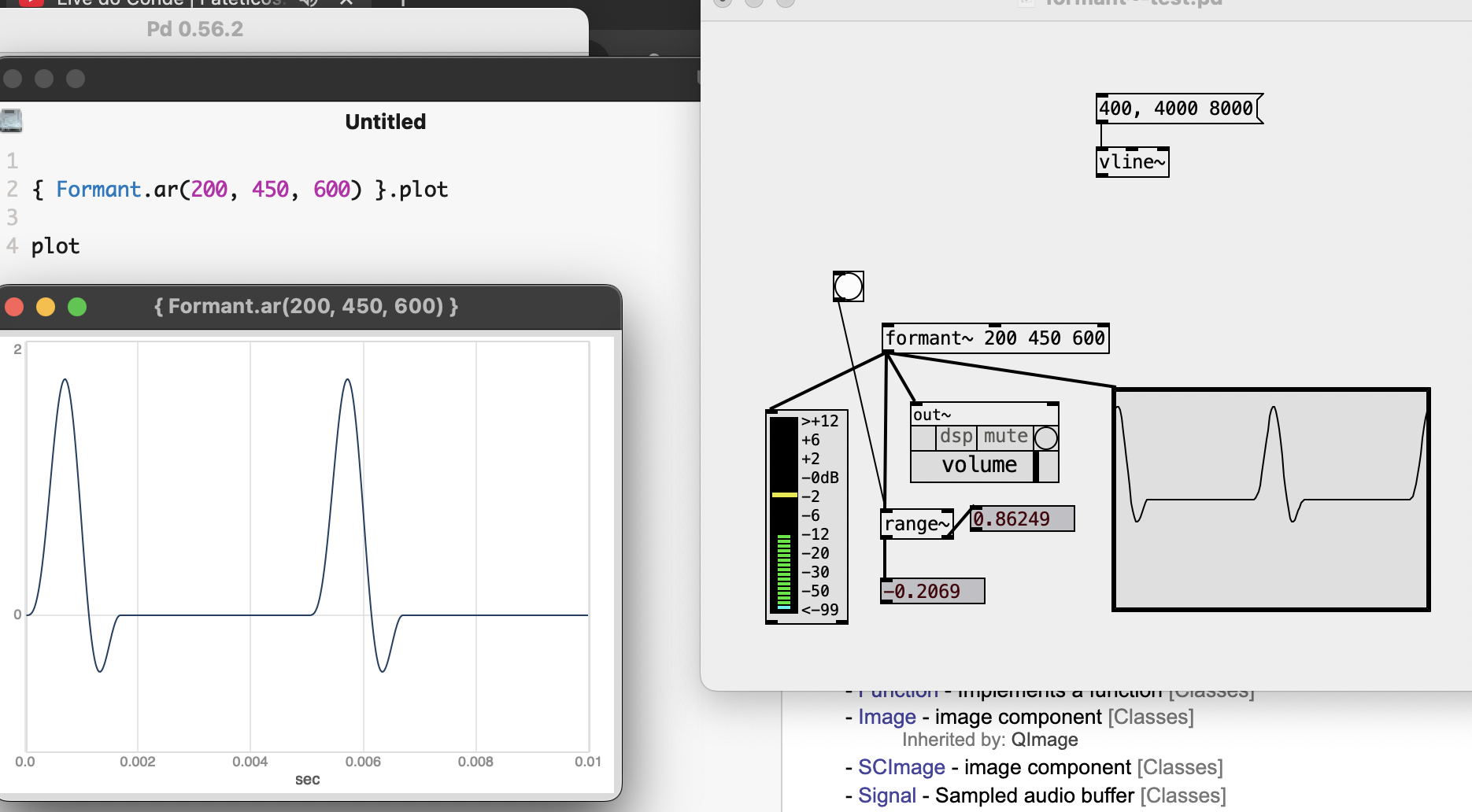-
porres
posted in technical issues • read moreyeah, I'm working on a version of that too to incorporate in ELSE. I tried for years to include that into Pd Vanilla and will give it another shot for 0.57, but it's likely I'll redesign and include it in ELSE

For vosim~ just get any recent github actions artifacts from https://github.com/porres/pd-else/actions but you have to be logged in
I now added a version of SuperCollider's Formlet Ugen, but I'm not sure how to use that in this context
-
porres
posted in technical issues • read moreFor those looking closely, the output scale of SC is bad, range can be from -2 to 2! I fixed it in my external.
-
porres
posted in technical issues • read moreby the way, just implemented SuperCollider's Formant Ugen as a compiled Pd object...

-
porres
posted in technical issues • read more@ddw_music said:
spectrogram~ is from cyclone
cyclone does not have a [spectrogram~] object
ELSE has [spectrograpg~] though.
About formant synthesis with FM, I know Miller includes something like that in the audio examples (see F10). Is it related maybe?
-
porres
posted in technical issues • read morenice, I had an older code 0.06 that I don;t know where I got it from and I tried to include that one back into Pd's extra, but it wasn't working. This [paf~], on the other hand is

-
porres
posted in technical issues • read moresure, but I still have to mature, learn and be sure of things
 and it's always been weird to me cause you have vosim, and fof, and paf, and filterbanks and whatnot... it's just a hard topic to cover
and it's always been weird to me cause you have vosim, and fof, and paf, and filterbanks and whatnot... it's just a hard topic to cover  and now I have to figure out the relationship between these all. If anyone could help, please say so
and now I have to figure out the relationship between these all. If anyone could help, please say so 
I'm looking at messages I sent to the Pd list in 2017, where I was asking about how to do the Formant Ugen from SC in Pd, hahahah.... see? It's been on my list forever... and 2017 was the first year of ELSE's development
 and my live electronics tutorial dates back to 2008... anyway... in the thread I say that the thing seems related to the fof opcode in Csound. And now I have to look into the source code all over again.
and my live electronics tutorial dates back to 2008... anyway... in the thread I say that the thing seems related to the fof opcode in Csound. And now I have to look into the source code all over again. -
porres
posted in technical issues • read morethanks, will look into all that. i literally have had this in my to do list for over a decade, or even longer, like 15 years or so
 to cover this in my Live Electronics Tutorial, and this post now made me jump on this. Anyway, I can and should pull the object back since you do have a working windows version and I still have no idea what this is all actually about in details.
to cover this in my Live Electronics Tutorial, and this post now made me jump on this. Anyway, I can and should pull the object back since you do have a working windows version and I still have no idea what this is all actually about in details. -
porres
posted in technical issues • read more@seb-harmonik.ar said:
maybe should get on that
surely, I couldn't run it on apple silicon, for instance.
What was the source you used for this object? I'm doing a deep dive on it all now...
One thing I didn't get and changed, and maybe I screwed it up, is that I'm updating the phase step of fundamental and center frequency for every sample, but I saw that you were doing it only in some case conditions that I forgot now...
I am also looking into paf~ and several other related things and this seems pretty similar to paf~
-
porres
posted in technical issues • read moregrab [vosim~] for windows in https://github.com/porres/pd-else/actions/runs/20151921140
This is based on shadylib, I fixed some bugs, made some changes, will make some more like adding MC support and will study some more about the code, algorithm, other implementations before actually releasing anything. But i uploaded the commit so you can test and grab this one...
I will also work on paf~ and the other stuff

-
porres
posted in technical issues • read morenice, this has been in my to do list for over a decade now

